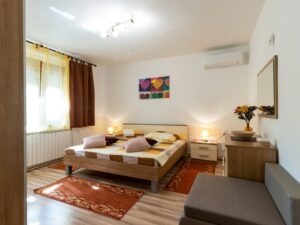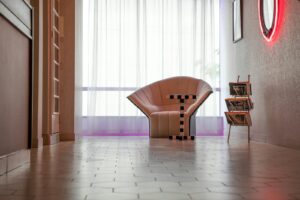Carpet is softer, warmer, and more affordable, making it ideal for bedrooms and areas needing comfort and sound insulation. Wood flooring, on the other hand, is more durable, easier to clean, and adds long-term value but costs more upfront and feels harder underfoot. The best choice depends on your lifestyle, budget, and room function.
Comfort & Feel Underfoot
When it comes to the feel beneath your feet, carpet takes the cake for comfort. It’s like walking on a soft cloud after a long day—a warm hug for your soles. The plush texture of carpet, especially varieties with higher pile or added padding, brings a sense of coziness that’s hard to beat. In bedrooms, nurseries, or family rooms, it turns the floor into a comfy playground, perfect for barefoot strolls or stretching out during movie night.
Hardwood, by contrast, feels firm and unforgiving. It might look the part—sleek and polished—but it doesn’t give an inch, literally. Step on it during a cold winter morning, and you’ll be wishing for socks or slippers. While area rugs can soften the blow, they’re just a patch job in comparison to wall-to-wall comfort.
In short, if you want a floor that pampers you from the ground up, carpet’s the real MVP. It’s not just about looks—it’s about creature comfort. With carpet, your feet will be singing a different tune.
Aesthetic & Design Appeal
When it comes to setting the scene, your flooring choice isn’t just background—it’s the stage on which your entire décor plays out. Carpet and wood flooring each tell a very different design story, and choosing between them can shift the entire feel of your home.
Carpet brings warmth, color, and texture into a space like a seasoned designer. It’s available in an endless array of hues, patterns, and pile styles—from elegant neutrals to bold geometric designs. Whether you’re dressing a formal living room or adding whimsy to a child’s bedroom, carpet lets you layer in visual softness and personality. You can go wall-to-wall for a seamless look or opt for custom borders and patterns that make the floor feel like art underfoot. It’s a visual chameleon that adapts to your style—cozy, contemporary, or classic.
Hardwood, on the other hand, is the showstopper that never goes out of fashion. It brings natural character, grain variation, and rich tone that instantly elevates a room’s aesthetic. Whether it’s oak, maple, or exotic teak, wood floors exude sophistication and timeless charm. Their visual appeal is rooted in simplicity and authenticity—think “less is more.” The clean lines and organic texture of hardwood often become the anchor for minimalist and modern interiors, while rustic planks can make a farmhouse or cottage feel like it’s straight from a magazine.
In essence, if carpet is a cozy sweater, hardwood is a tailored suit. Both make a statement—just in different languages. So when it comes to design, it all depends on whether you’re looking for soft comfort with endless customization, or timeless elegance with natural flair. Either way, you’re laying the foundation for your home’s style—and that’s no small potatoes.
Durability & Longevity
When choosing between carpet and wood flooring, one of the biggest considerations is how long your floors will go the distance—and how gracefully they’ll age. It’s the classic case of short-term comfort versus long-haul toughness.
Hardwood flooring is the tough-as-nails contender in this arena. With proper care, solid hardwood can last decades—we’re talking 30, 50, even 100 years in some cases. It’s like the tortoise in the race: slow and steady, but definitely built for the long run. Dings and scratches may show over time, especially in high-traffic areas, but here’s the kicker—hardwood can be sanded and refinished multiple times, giving it a fresh lease on life whenever it starts to look tired. Engineered wood isn’t quite as long-lived as solid hardwood, but still holds its own in terms of durability.
Carpet, meanwhile, tends to fall on the shorter end of the lifespan spectrum. Most residential carpets last around 5 to 15 years, depending on the quality of the fiber, foot traffic, and how well it’s maintained. In a low-use bedroom, a plush carpet can stay in good shape for well over a decade. But in high-traffic zones like hallways and living rooms? It can wear out quicker than you can say “threadbare.” Stains, matting, and fiber breakdown are par for the course, especially if pets, kids, or muddy shoes are in the mix.
That said, not all carpets are pushovers. High-density nylon and wool carpets—especially with proper padding—can hold their own and resist wear quite admirably. But unlike wood, once a carpet’s worn out, it can’t be refinished—it has to be replaced.
In a nutshell, if you’re in it for the long haul and want a floor that can take a licking and keep on ticking, hardwood is your best bet. But if you’re more focused on comfort and willing to swap it out down the road, carpet can still be a cozy and cost-effective choice. After all, sometimes it’s not about how long you last—it’s how well you serve your time while you’re there.
Maintenance & Cleaning
When it comes to keeping your floors looking sharp, carpet and wood flooring play by very different rules—and your cleaning routine might just be the deciding factor between the two.
Let’s start with hardwood. On the surface (pun intended), it’s relatively low-maintenance. A quick sweep or dust mop every couple of days keeps debris in check, and a weekly vacuum or damp mop (using a wood-safe cleaner) helps maintain that showroom shine. Spills? Just wipe ’em up fast. Hardwood doesn’t like water sitting around, so there’s no room for dawdling—otherwise, you risk warping or stains. But overall, it’s smooth sailing—especially for allergy sufferers, since dust, pollen, and pet dander can’t hide like they do in carpet fibers.
Now, carpet—that’s a different animal. It might feel cozy underfoot, but it’s a magnet for dust, dirt, crumbs, hair, and stains. You’ll need to vacuum at least once or twice a week, and high-traffic areas might demand daily attention. Spills? You’d better blot fast before they sink in—because once something settles into those fibers, it can be harder to get rid of than a bad habit. Deep cleaning (like steam cleaning) is recommended every 12–18 months—or more often if you’ve got kids, pets, or a particularly messy household.
And let’s not forget stain management. Carpet requires more vigilance—wine, coffee, and muddy paws can leave marks that just won’t quit. With wood, most messes are surface-level and easier to handle, provided you’re not dealing with major water damage.
In short, hardwood floors let you work smarter, not harder. Carpet, while warm and inviting, asks you to roll up your sleeves and stay on your toes. If you like your cleaning light and your weekends free, wood might be the way to go. But if you’re up for the challenge—and don’t mind a little extra effort—carpet can still hold its charm. After all, a clean carpet is a labor of love.
Noise & Insulatio
When it comes to noise and insulation, carpet and wood flooring are as different as chalk and cheese. One keeps things hushed and cozy, while the other tends to make a bit more racket and can leave you reaching for your slippers.
Let’s start with carpet—the reigning champ of sound absorption. Thanks to its soft fibers and cushy padding, carpet acts like a natural muffler. It dampens footfalls, cushions dropped items, and cuts down on echo in a big way. If you’ve got a bustling household with kids, pets, or just a lot of foot traffic, carpet can take the edge off and help keep the peace. In multi-level homes or apartment buildings, it’s especially handy for preventing the clippity-clop of footsteps from echoing between floors. It’s also a winner for thermal insulation—carpet traps warm air, helping rooms stay cozy in the winter and keeping your toes from freezing on cold mornings. It’s like having a built-in sweater for your floor.
Now, wood flooring may have elegance and charm, but it’s not known for whisper-quiet acoustics. Hard surfaces like wood tend to amplify sound. Every step, scratch, or tumble becomes part of the soundtrack of your day. In open-plan homes or rooms with high ceilings, this can lead to a bit of an echo chamber effect. Area rugs can help take the edge off, but they won’t match the hush carpet naturally provides.
As for thermal comfort, wood doesn’t hold onto heat like carpet. In warm climates, that can be a blessing—it feels cool underfoot. But in colder regions or during winter, you might find yourself tiptoeing across the floor like you’re walking on ice cubes.
Bottom line? If you’re chasing a quieter, warmer, and more insulated living space, carpet is the strong, silent type. Wood flooring, while beautiful, might make a bit more noise and require extra layers—like rugs and slippers—to keep things cozy. It’s a case of style meets substance, and your lifestyle will tip the scales.
Installation & Cost – Counting Pennies and Time
When it comes to installation and cost, the differences between carpet and wood flooring are as plain as day. One may be quicker and cheaper upfront, while the other can cost a pretty penny but last for decades if treated right.
Carpet is generally more budget-friendly, both in terms of material and labor. The average cost per square foot for carpet (including installation) often falls between $2 to $5, depending on the type (nylon, polyester, wool, etc.) and padding used. Plus, installation is typically quick and painless—a professional team can often get the job done in a single day. Carpet is also more forgiving when it comes to subfloor imperfections. Minor cracks or uneven spots can often be covered up without the need for expensive repairs.
But here’s the kicker: while carpet costs less upfront, it may not go the distance. Depending on wear and tear, most carpets need to be replaced every 6–10 years in residential settings. So over time, you might find yourself digging into your wallet more frequently than expected.
Wood flooring, on the other hand, is a more substantial investment right out of the gate. Depending on whether you choose solid hardwood or engineered wood, the cost can range anywhere from $8 to $15+ per square foot, with high-end exotic woods tipping the scale even further. Installation is also more labor-intensive and can take several days, especially if the floor needs to be sanded and finished on-site. And don’t forget—subfloor prep is often more meticulous. A less-than-perfect subfloor may require leveling or repairs before wood can be laid.
But here’s where the math turns around: wood flooring tends to have an exceptionally long lifespan—20, 30, or even 50 years—with proper care. In fact, solid hardwood can often be refinished multiple times, giving it a second wind without a full replacement.
So, if you’re looking for a flooring option that’s easier on the wallet today and faster to install, carpet fits the bill. But if you’re playing the long game and want an investment that can stand the test of time, wood flooring might be worth every nickel. It’s a classic case of pay now or pay later—and it all comes down to your budget, lifestyle, and long-term plans.
Pet & Kid Friendliness
When it comes to a home filled with zooming toddlers and four-legged companions, your flooring choice needs to be more than stylish—it needs to be tough as nails and easy to live with. Carpet and wood flooring each bring their own set of pros and cons to the table, and the best choice depends on whether you’re more concerned with comfort, cleanliness, or claw marks.
Carpet is often the go-to for families with young children. It’s soft as a cloud underfoot, making it a safer surface for kids learning to crawl, walk, or take a tumble. The cushioned feel also muffles noise, so playtime doesn’t echo like a drumline through the house. Plus, pets love it too—it gives them traction and a cozy place to nap. And let’s not forget: a carpeted floor can act as a barrier, absorbing minor spills before they spread.
But it’s not all sunshine and cuddles. Carpet can be a magnet for messes. Pet accidents, muddy paws, juice spills, and snack crumbs can all sink into the fibers and be tricky to remove without frequent vacuuming and occasional deep cleans. If your furry friend sheds like it’s going out of style or has the occasional “oops” moment, you’ll be working overtime to keep it fresh and stain-free.
Wood flooring, meanwhile, is much easier to clean. Spills, fur, and dirt can be swept or mopped up in a flash. Pet hair doesn’t cling to wood like it does to carpet, and accidents are less likely to soak in and leave lasting odors—a real lifesaver for pet owners. However, that easy cleanup comes at a price: wood floors can scratch. Dog nails, dropped toys, or a rogue LEGO underfoot can leave their mark. While some wear and tear adds character, deep gouges might need sanding or refinishing to repair.
Another factor to consider is noise—wood floors don’t absorb sound the way carpet does. Kids running through the hall or pets chasing each other can turn your home into a mini stampede. You can offset this with rugs or runners, but it’s something to keep in mind if peace and quiet are high on your list.
In short, if softness, warmth, and fall-friendly floors are a priority, carpet gets a gold star for kid and pet comfort. But if your main concern is cleanup and durability against messes, wood might be the mane attraction.
Which One Wins?
There’s no one-size-fits-all answer. If you’re after plush comfort, warmth, and sound insulation, carpet could be your best friend. But if you value durability, easy cleaning, and timeless elegance, wood flooring may be worth the investment.
Your best bet? Mix and match! Use hardwood in main living areas for a clean, stylish look and install carpet in bedrooms or basements where comfort counts most.





